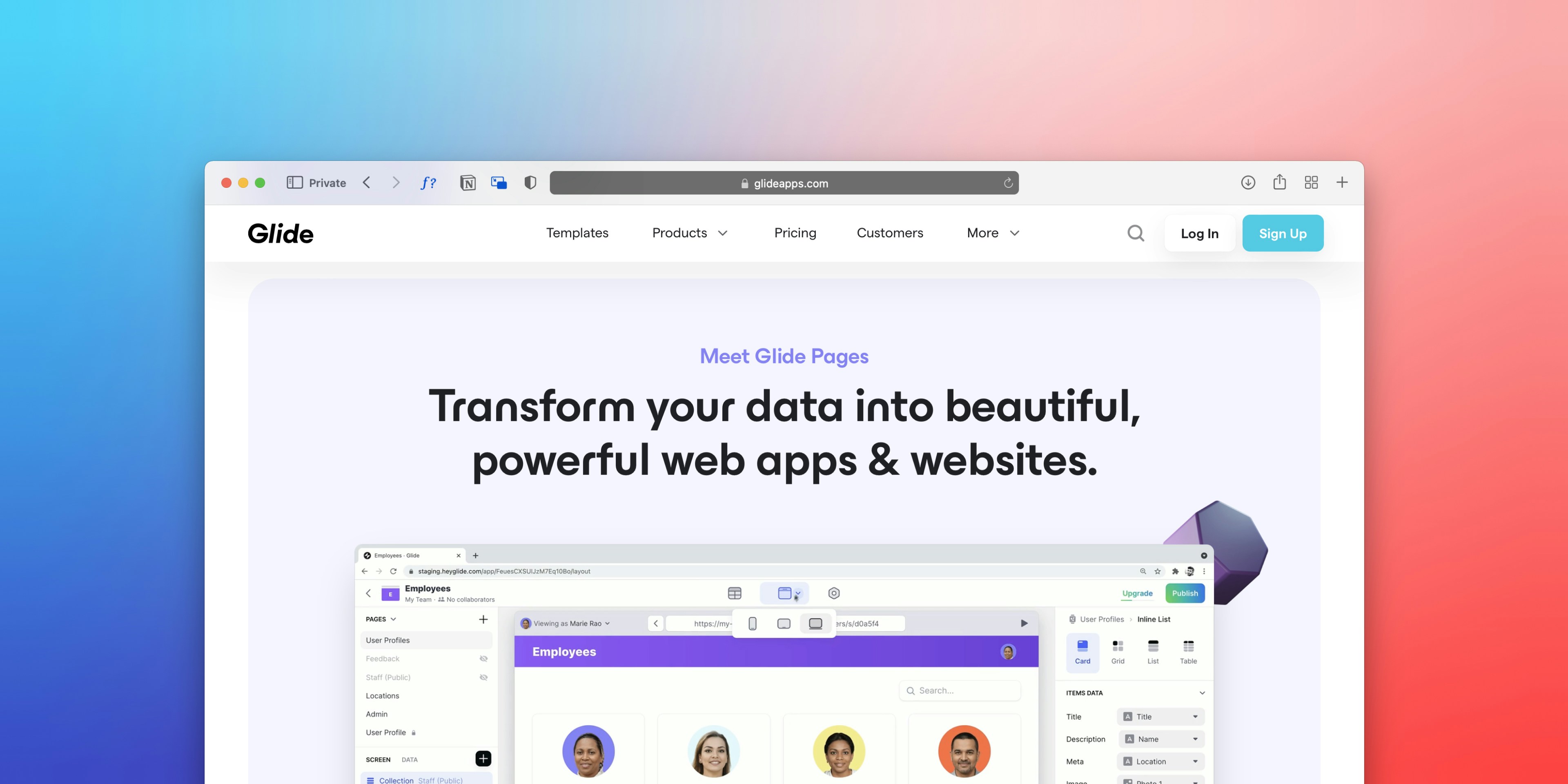
Introduction to Landing Pages and Websites
In the realm of digital marketing, understanding the distinction between landing pages and websites is fundamental for businesses striving to enhance their online visibility and effectiveness. A landing page is a standalone web page designed specifically for a marketing or advertising campaign. Its primary objective is to convert visitors into leads or customers by focusing on a single call-to-action. Typically, landing pages eliminate distractions by containing minimal links and concise information, which ultimately guides the user towards a predefined action, such as signing up for a newsletter or making a purchase.
Conversely, a website is a comprehensive collection of web pages that collectively represent a brand or organization. Websites serve as the central hub of a business’s online presence, offering a wide range of information about products, services, company history, and contact details. Unlike landing pages, which are tailored for specific campaigns, websites are usually more expansive and multifunctional. They often include sections like blog posts, e-commerce stores, about pages, and contact forms, catering to a diverse audience and various user intentions.
Understanding the difference between landing pages and websites is crucial for businesses because each serves a distinct purpose within a marketing strategy. Launching a successful marketing campaign hinges on utilizing the appropriate tools, whether that be a targeted landing page aimed at conversion or a full website that provides comprehensive information. By recognizing these differences, businesses can implement more effective digital marketing strategies that align with their goals, ensuring that they reach their target audience successfully. Thus, grasping the roles of landing pages and websites empowers companies to optimize their online presence effectively.
The Purpose of a Landing Page
A landing page serves a distinct function within the realm of digital marketing, designed primarily to fulfill specific objectives that align with promotional strategies. Unlike a general website, a landing page typically focuses on a singular call to action, which might be to capture leads, promote a particular product, or stimulate conversions. This narrow focus is essential; it enables businesses to streamline user experience and maximize the effectiveness of their marketing campaigns.
The fundamental goal of a landing page is to convert visitors into leads or customers by directing them to take a specific action. For instance, a landing page might invite users to sign up for a newsletter, download an e-book, or register for a webinar. By clearly outlining the benefits of taking this action and reducing distractions, businesses create an environment where potential customers can easily engage with the message at hand and understand the value proposition offered.
To achieve maximum efficacy, landing pages are meticulously crafted with targeted and concise content that speaks directly to the needs and interests of the intended audience. The design elements, including visuals and calls to action, reinforce the primary objective, making it easier for users to follow through with the desired action. Additionally, integrating persuasive elements such as testimonials, statistics, and clear navigation can help bolster credibility and encourage conversions.
In essence, the purpose of a landing page is to serve as a gateway that leads visitors towards a specific marketing goal. Through strategic design and focused messaging, it effectively captures and nurtures leads, contributing significantly to the overall success of marketing efforts. As companies increasingly recognize the value of strategic online initiatives, the importance of knowledgeable landing page design cannot be overstated.
The Purpose of a Website
A website serves as a crucial element of an organization’s online presence, functioning as a centralized platform where users can access a multitude of resources and information about the brand. Unlike a landing page, which typically has a singular focus, a website encompasses various elements that contribute to a comprehensive digital experience. One of the primary purposes of a website is to disseminate information about the company, including its history, mission, and vision. This transparency builds trust and allows visitors to gain insights into the ethos of the business.
Moreover, a website acts as a showcase for products or services, offering potential customers detailed descriptions, specifications, and visuals that are instrumental in the purchasing decision-making process. Through strategically designed product pages, businesses can present their offerings in a manner that aligns with user interests, enhancing the likelihood of conversions. Consequently, an effective website often integrates e-commerce capabilities, enabling users to make purchases directly online.
Beyond mere information and product display, a well-structured website plays a vital role in establishing brand credibility. When users encounter a professional-looking website, they are more inclined to view the brand as legitimate and trustworthy. Features such as customer testimonials, case studies, and a well-maintained blog can further elevate a brand’s authority within its industry. Additionally, websites provide a platform for connecting with audiences through forms, chat features, and social media integration, fostering community and interaction. As a result, businesses can leverage their websites not just for sales, but also for relationship-building and customer service. Overall, a website serves multiple purposes that are critical to sustaining and growing a successful online presence.
Key Differences Between Landing Pages and Websites
When discerning between landing pages and websites, several critical differences emerge that significantly influence their design, functionality, and purpose. A landing page is typically a standalone web page created specifically for marketing or advertising campaigns. Its primary focus is to encourage visitors to take a specific action, such as completing a form, signing up for a newsletter, or making a purchase. In contrast, a website consists of multiple interconnected pages that collectively offer a broader range of information about a business or organization.
Design-wise, landing pages are usually more streamlined and targeted. They employ minimal navigation elements to reduce distractions, centering the user’s attention on a single call-to-action (CTA). Websites, however, incorporate comprehensive navigation structures to facilitate exploration of various sections, including services, contact information, and blog posts. This structure supports a richer user experience, but it may also dilute the focus for specific marketing objectives.
Functionality diverges as well. Landing pages tend to utilize forms or other conversion tools prominently, guiding the user toward a predefined goal. On the other hand, websites serve a multitude of functions, such as providing information, resources, and engagement through dynamic content. The absence of specific action-driven goals on a typical website can result in higher bounce rates, as users may find it challenging to identify their next steps without a clear CTA.
From an SEO perspective, landing pages are often optimized for specific keywords or phrases related to the campaign, enhancing their chances of ranking well in search engine result pages. Websites focus on broader keyword strategies, driving organic traffic through a variety of content types. Consequently, both landing pages and websites play distinct yet complementary roles in achieving marketing goals, with each serving unique functions within the digital landscape.
When to Use a Landing Page
Implementing a landing page serves various marketing objectives, primarily designed to convert visitors into leads or customers through targeted messaging and streamlined calls to action. A landing page is most effective during specific campaigns, product launches, or promotions. In instances where businesses aim to showcase a singular product or service, a well-crafted landing page can significantly enhance user engagement by narrowing the focus on that offering.
For instance, during a promotional campaign, businesses can develop a landing page tailored to highlight the benefits, features, and exclusive deals of the product, effectively addressing potential customers’ pain points. This singular focus helps eliminate distractions typically found on standard websites, guiding users towards conversion. It is essential to employ concise, persuasive copy and strong visuals that resonate with the target audience. Additionally, integrating compelling testimonials or trust signals can further enhance credibility, encouraging visitors to take the intended action.
Moreover, landing pages are particularly useful for capturing leads, especially during lead generation campaigns. By offering something valuable—in exchange for user information such as names and email addresses—a business can create a pathway to nurture those leads over time. Incorporating lead magnets, such as free trials, e-books, or exclusive webinars, can further entice visitors to convert.
Best practices also recommend optimizing landing pages for mobile devices, considering the increasing number of users accessing content through smartphones. Page load speed, clear navigation, and prominent calls to action are critical elements that play a significant role in successful conversions. Understanding the audience and tailoring the content accordingly can lead to more effective landing pages that achieve their intended objectives.
When to Use a Website
In today’s digital landscape, understanding when to utilize a full website over a landing page is crucial for businesses aiming to maximize their online presence. A complete website serves multiple purposes and can significantly enhance brand visibility, product offerings, and customer engagement. Businesses should consider establishing a multi-page website when they require comprehensive information dissemination, branding, and functionality, which cannot be adequately achieved through a single landing page.
A full website is especially beneficial for organizations that offer a variety of products or services, as it allows for intricate categorization and detailed information. For instance, e-commerce brands can showcase a diverse range of products, each with its dedicated page containing descriptions, images, and customer reviews. This informational structure not only assists in SEO optimization but also enhances user experience, as visitors can navigate easily through the site to find specific offerings. In contrast, a landing page is typically designed for focused campaigns or promotional offers, limiting its capacity for extensive content.
Moreover, businesses looking to establish their authority in their industry can leverage a multi-page site by integrating a blog or resources section. This area enables them to produce valuable content, improving SEO rankings and providing visitors with insights into industry trends and tips. Additionally, having dedicated sections for about pages, contact information, and FAQs can significantly increase engagement as users tend to appreciate easily accessible company information.
Ultimately, a comprehensive website is necessary for organizations seeking long-term growth, better user engagement, and enhanced visibility. By strategically organizing and presenting their content, businesses can optimize user navigation, making it easy for potential customers to find what they are looking for, thus increasing the likelihood of conversions and loyalty.
Design Considerations for Landing Pages vs. Websites
When distinguishing between landing pages and websites, it is essential to focus on the design principles that drive their effectiveness. A landing page is typically designed with a singular purpose—encouraging visitors to take a specific action, such as signing up for a newsletter or making a purchase. This clear objective influences several key design elements, including visual hierarchy, layout, and the strategic use of persuasive elements.
The visual hierarchy on a landing page is crucial. This arrangement directs the viewer’s attention to the most important elements first, usually the call-to-action (CTA) button. Designers employ techniques, such as contrasting colors and bold typography, to ensure that the CTA stands out against the backdrop of the landing page. In contrast, a full website encompasses multiple pages, requiring a more complex visual hierarchy. When designing a website, a coherent structure is necessary to guide users through various sections, balancing the need for navigation with engaging content.
Layout is another essential aspect that sets landing pages apart from websites. Landing pages often feature a single-column format to streamline information consumption and enhance focus on the primary goal. This direct approach minimizes distractions. Websites, however, must incorporate more intricate layouts to accommodate diverse content types, from blogs to galleries, each requiring different design considerations.
The integration of persuasive elements is equally vital. A landing page typically employs elements such as testimonials, social proof, and urgency indicators to motivate users to act immediately. Websites can certainly include these elements but often require a broader set of persuasive templates, reflecting the varied objectives a full website serves. In essence, while both landing pages and websites prioritize user engagement, their distinct design approaches cater to different needs and objectives.
Measuring Success: Metrics for Landing Pages vs. Websites
When it comes to evaluating the effectiveness of landing pages and websites, it is crucial for marketers to understand the different key performance indicators (KPIs) that can reflect their performance. Landing pages and websites serve distinct purposes and thus require tailored metrics to gauge their success accurately.
One of the primary metrics for landing pages is the conversion rate, which is the percentage of visitors who complete the desired action, such as signing up for a newsletter or making a purchase. High conversion rates indicate that a landing page is successful in persuading visitors to take that specific action, making it a vital metric for any marketing campaign centered around a landing page.
On the contrary, a website’s success is not solely defined by conversions, as a website typically serves broader objectives, such as brand awareness, information dissemination, or serving as an online portfolio. For websites, visitor engagement metrics, including the average session duration and pages per session, are critical. These metrics help assess how engaging and informative the website content is for users, providing insights into the overall user experience.
Bounce rates also play a significant role in evaluating both formats. A high bounce rate on a landing page might indicate that the content is not relevant or compelling enough for visitors, which directly impacts conversions. In contrast, for websites, a high bounce rate may suggest that users are finding insufficient information, prompting them to leave the site quickly.
Monitoring these metrics will provide marketers with a clearer understanding of how their landing pages and websites are performing, allowing for more informed decision-making. By focusing on the right KPIs tailored to each format, marketers can maximize their online effectiveness and ensure they are meeting their business goals.
Conclusion: Making the Right Choice for Your Business
In the digital landscape, the decision between investing in a landing page and a full-fledged website can significantly influence business outcomes. Throughout this article, we have explored the primary distinctions between landing pages and websites, highlighting their respective functionalities and ideal use cases. A landing page is designed for focused, specific campaigns, often with a singular goal, such as lead generation or driving conversions. In contrast, a website serves as a comprehensive digital presence, offering multiple pages and serving various purposes, from showcasing products to providing company information.
To make an informed decision, businesses must first consider their marketing objectives. If the goal is to generate leads for a particular campaign or product, a well-optimized landing page can be incredibly effective. Landing pages allow for targeted messaging that resonates with potential customers and encourages action within a concise framework. Alternatively, for organizations looking to establish a broader online presence or engage users with diverse content, a full website is preferable. It offers a wealth of information and navigational options that enhance user experience.
Additionally, understanding the target audience is critical in this decision-making process. A business that caters to a niche market may benefit more from a landing page to address specific needs and drive immediate results. On the other hand, companies aiming for wider outreach may find a website more beneficial in capturing diverse customer interests. Balancing these considerations can help determine whether to invest in one or both of these essential digital tools.
Ultimately, aligning the choice between a landing page and a website with strategic business goals is paramount. By carefully evaluating the intended use, audience engagement, and marketing objectives, companies can create a digital strategy that effectively meets their needs and propels them toward success.



